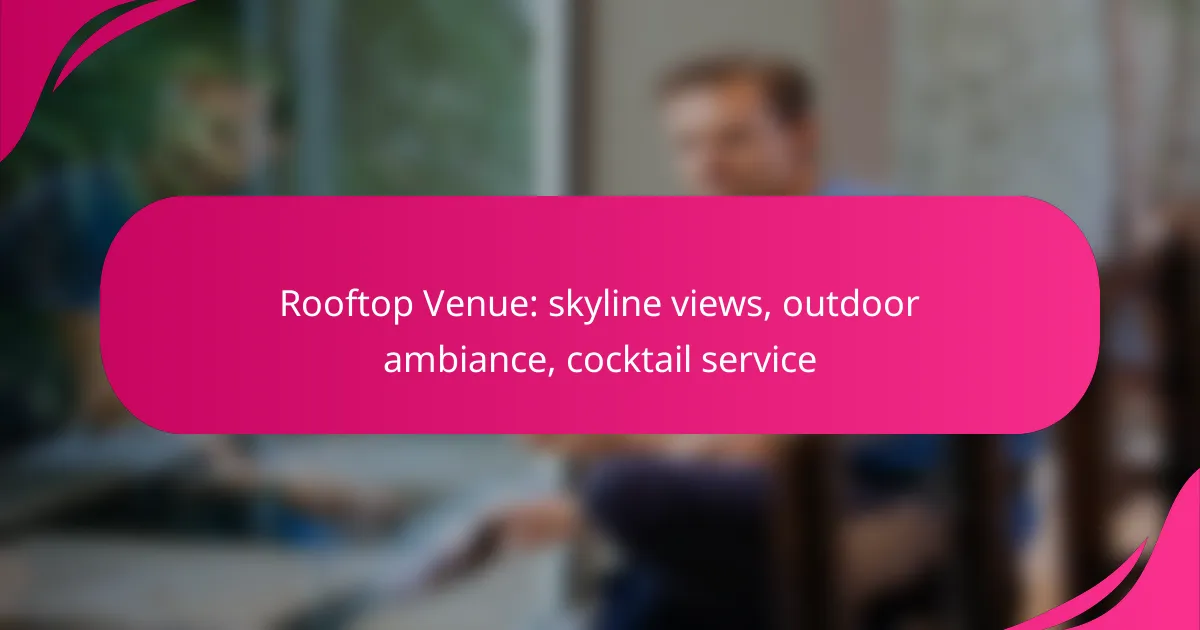Sports facilities play a crucial role in enhancing team engagement by offering interactive experiences that promote collaboration and camaraderie among members. With a range of entertainment options available, from live music to family-friendly activities, these venues create a vibrant atmosphere for diverse audiences. Additionally, the large capacities of major sports facilities allow for significant spectator engagement, making them ideal for hosting events that maximize participation and enjoyment.

How can sports facilities enhance team engagement?
Sports facilities can significantly enhance team engagement by providing interactive experiences that foster collaboration and camaraderie among team members. By incorporating various activities and events, these facilities can create an environment that encourages participation and strengthens team dynamics.
Interactive training sessions
Interactive training sessions allow teams to engage in hands-on activities that improve skills while fostering teamwork. Facilities can offer specialized training programs that include drills, simulations, and competitive exercises tailored to the team’s needs. For example, using technology like virtual reality can enhance the training experience by providing realistic scenarios.
Consider scheduling these sessions regularly to maintain momentum and ensure continuous improvement. Aim for sessions that last between one to two hours, allowing ample time for both instruction and practice.
Team-building events
Team-building events are essential for enhancing relationships among team members. Sports facilities can host various activities, such as obstacle courses, scavenger hunts, or sports tournaments, which promote collaboration and communication. These events should be designed to be fun and engaging, encouraging participation from all members.
Plan these events at least once a quarter to keep team morale high and to build lasting connections. Ensure that activities cater to different skill levels to maximize inclusivity and enjoyment.
Fan engagement activities
Fan engagement activities create a sense of community and support for the team, enhancing the overall experience for both players and fans. Facilities can organize meet-and-greet events, autograph sessions, or fan appreciation days to foster a strong connection between the team and its supporters. These activities can also include interactive games or contests during events.
Incorporate fan feedback to tailor activities that resonate with the audience, ensuring a more personalized experience. Aim for a mix of activities that appeal to various demographics, from families to dedicated sports enthusiasts.
Community outreach programs
Community outreach programs allow sports facilities to connect with the local community while promoting team values. Initiatives such as youth clinics, charity events, or school partnerships can enhance the team’s visibility and foster goodwill. These programs not only benefit the community but also provide team members with a sense of purpose and pride.
Engage with local organizations to identify needs and tailor programs accordingly. Consider hosting events that align with community interests, ensuring that participation is accessible and inclusive for all. Aim for at least one major outreach event per season to maintain a strong community presence.

What entertainment options are available at sports facilities in the UK?
Sports facilities in the UK offer a variety of entertainment options that enhance the spectator experience. These options range from live music events to family-friendly activities, catering to diverse audiences and creating a vibrant atmosphere.
Live music events
Many sports facilities host live music events, providing an exciting backdrop to sporting activities. These concerts often feature local bands or well-known artists, appealing to fans of various genres. Attendees can enjoy performances before or after games, making their visit more memorable.
When planning to attend a live music event at a sports facility, consider checking the schedule in advance and purchasing tickets early, as popular shows can sell out quickly.
Food and beverage experiences
Food and beverage options at sports facilities have evolved significantly, offering a range of choices from traditional stadium fare to gourmet dining experiences. Fans can enjoy everything from burgers and hot dogs to craft beers and fine wines, enhancing their overall enjoyment of the event.
Look for packages that combine food and drink with game tickets, as these can provide better value. Additionally, be aware of any dietary options available, such as vegetarian or gluten-free meals, to ensure a satisfying experience.
Family-friendly activities
Sports facilities often include family-friendly activities to engage younger fans. These may include interactive zones, face painting, and games that allow children to participate in the excitement of the event. Such activities create a welcoming environment for families attending games together.
Check the facility’s website for specific family events or promotions, as many venues offer discounted tickets for children or special family packages that enhance the experience.
Corporate hospitality packages
Corporate hospitality packages at sports facilities provide businesses with an opportunity to entertain clients or reward employees. These packages typically include premium seating, catering, and exclusive access to lounges or suites, creating a luxurious experience.
When considering corporate hospitality, evaluate the options available to ensure they align with your goals, whether for networking, team building, or celebrating achievements. Booking in advance is advisable, as these packages can be in high demand during popular events.

What is the capacity of major sports facilities in the UK?
The capacity of major sports facilities in the UK varies significantly, with some venues accommodating tens of thousands of spectators. Understanding these capacities is essential for event planning, team engagement, and maximizing entertainment options.
Wembley Stadium capacity
Wembley Stadium, located in London, is one of the largest sports venues in the UK, with a seating capacity of approximately 90,000. This iconic stadium hosts major football matches, including the FA Cup Final, and is also used for concerts and other large events.
When planning an event at Wembley, consider the extensive facilities available, including hospitality suites and fan engagement areas, which enhance the overall experience for attendees. The stadium’s large capacity allows for significant ticket sales, making it a prime location for high-profile events.
Old Trafford capacity
Old Trafford, home to Manchester United, has a capacity of around 74,000 spectators. This historic stadium is known for its passionate fan base and vibrant atmosphere during matches, making it a premier destination for football enthusiasts.
For events at Old Trafford, it’s important to leverage the stadium’s rich history and connection to the team to engage fans. The venue offers various entertainment options, including guided tours and interactive experiences, which can enhance visitor engagement.
Twickenham Stadium capacity
Twickenham Stadium, the home of English rugby, has a capacity of about 82,000. It is the largest rugby union stadium in the world and hosts international matches, including the annual Six Nations Championship.
When organizing events at Twickenham, consider the stadium’s unique rugby culture and the opportunities for fan engagement through hospitality packages and themed events. The large capacity allows for a diverse range of activities, from sporting events to concerts, catering to a wide audience.

How to choose the right sports facility for your event?
Selecting the right sports facility involves evaluating location, amenities, and costs to ensure it meets the needs of your event and participants. Prioritize factors like accessibility, available entertainment options, and capacity to create an engaging experience.
Location and accessibility
The location of a sports facility is crucial for attendance and convenience. Choose a venue that is easily accessible by public transport or has ample parking options. Consider the proximity to hotels or accommodations for out-of-town participants.
Evaluate the surrounding area for safety and amenities, such as restaurants and shops, which can enhance the overall experience for attendees. A well-located facility can significantly boost engagement and attendance.
Available amenities
Look for facilities that offer a range of amenities to enhance the event experience. This may include seating capacity, locker rooms, and restroom facilities. Additional features like Wi-Fi, audio-visual equipment, and catering services can also be beneficial.
Entertainment options, such as scoreboards, video screens, and interactive areas, can keep participants and spectators engaged throughout the event. Ensure the facility can accommodate any specific requirements you may have for your event.
Cost considerations
Budgeting is essential when selecting a sports facility. Costs can vary widely based on location, capacity, and amenities. Be prepared to compare different venues and their pricing structures, including rental fees, deposits, and any additional charges for services.
Consider potential hidden costs, such as insurance, security, and cleaning fees. It’s wise to allocate a portion of your budget for unexpected expenses to avoid financial strain as the event date approaches.

What are the benefits of large-capacity sports facilities?
Large-capacity sports facilities provide significant advantages, including increased revenue opportunities and enhanced fan engagement. These venues can accommodate a high volume of spectators, allowing for diverse events and maximizing potential profits.
Increased revenue potential
Large-capacity sports facilities can generate substantial income through ticket sales, concessions, and sponsorships. By hosting major sporting events, concerts, and community gatherings, these venues can attract thousands of attendees, significantly boosting revenue streams.
For example, a stadium with a capacity of 50,000 can potentially earn millions in ticket sales alone during a major event. Additionally, increased foot traffic leads to higher sales for food and merchandise, further enhancing profitability.
Enhanced fan experience
With more space, large-capacity facilities can offer a variety of entertainment options that enhance the overall fan experience. Features such as upgraded seating, improved sightlines, and state-of-the-art technology create a more enjoyable atmosphere for attendees.
Moreover, these venues often include amenities like fan zones, interactive displays, and diverse food choices, making events more engaging. This not only keeps fans entertained but also encourages repeat visits and loyalty to the venue.
Versatility for various events
Large-capacity sports facilities are versatile spaces that can host a wide range of events beyond sports, including concerts, exhibitions, and community festivals. This adaptability allows for year-round utilization, maximizing the venue’s potential.
For instance, a facility designed for football can easily accommodate basketball games or large-scale concerts, attracting different audiences. This flexibility not only increases revenue but also strengthens community ties by serving as a hub for various activities.

How do sports facilities support local communities?
Sports facilities play a crucial role in supporting local communities by providing spaces for recreational activities, fostering team engagement, and offering entertainment options. They serve as hubs for social interaction and physical fitness, enhancing community spirit and well-being.
Hosting local sports leagues
Sports facilities often host local sports leagues, which provide opportunities for residents to participate in organized competitions. These leagues can cater to various age groups and skill levels, promoting inclusivity and community involvement.
When setting up a local sports league, consider factors such as facility availability, scheduling, and equipment needs. For example, a community center may offer basketball courts and fields for soccer, allowing multiple leagues to operate simultaneously.
To ensure success, it’s essential to communicate effectively with participants and establish clear rules and schedules. Engaging local businesses for sponsorship can also enhance the league’s visibility and financial support.



